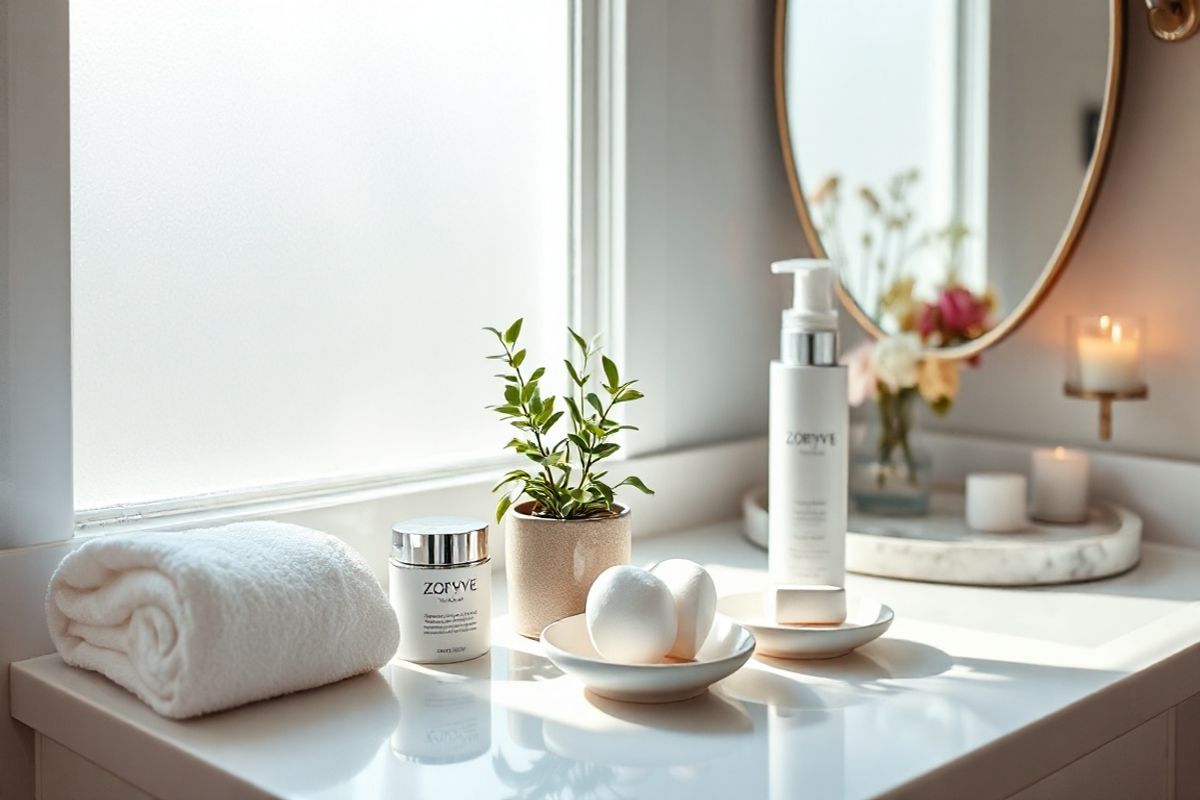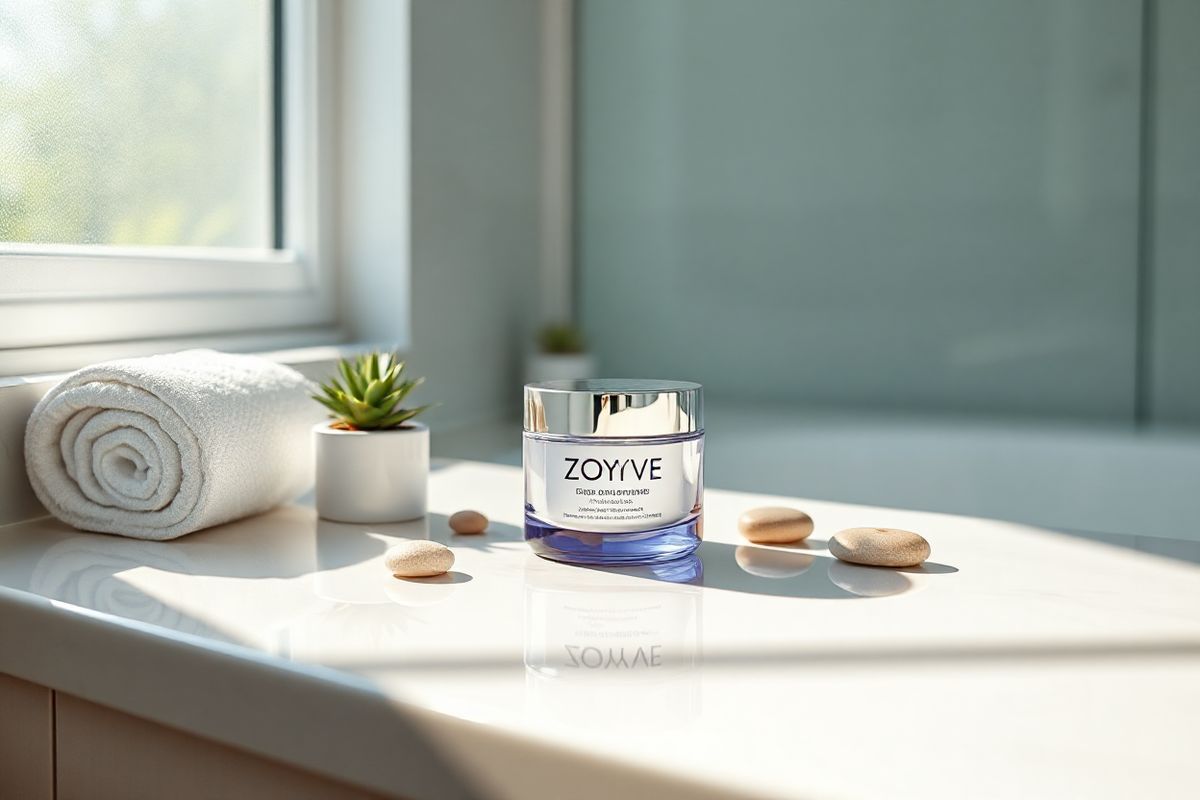Table of Contents
Understanding Zoryve: An Overview of Its Purpose and Benefits

zoryve (roflumilast) is a groundbreaking topical treatment that has been approved by the FDA for the management of seborrheic dermatitis and atopic dermatitis. It is primarily available in two formulations: a foam (0.3% roflumilast) for the treatment of seborrheic dermatitis, and a cream (0.15% roflumilast) for atopic dermatitis. The foam is indicated for use in adults and children aged 9 years and older, while the cream is approved for use in individuals aged 6 years and older with mild to moderate atopic dermatitis.
This medication functions by inhibiting phosphodiesterase-4 (PDE4), an enzyme that plays a crucial role in the inflammatory response. By reducing the activity of this enzyme, Zoryve effectively diminishes inflammation associated with these dermatological conditions, presenting a non-steroidal alternative that can be used over extended periods without the adverse effects commonly associated with topical corticosteroids (CS) (National eczema Association, n.d.).
Zoryve foam has demonstrated impressive efficacy in clinical trials. For instance, in the STRATUM Phase 3 trial, 79.5% of participants achieved clear or almost clear skin after 8 weeks of treatment, compared to only 40.8% in the vehicle group. Similar outcomes were noted in the Trial 203, underscoring the robust performance of Zoryve in managing seborrheic dermatitis.
Navigating the Price of Zoryve: What to Expect and How to Save

The cost of Zoryve can vary significantly based on factors such as insurance coverage and pharmacy location. In general, the price for Zoryve cream is approximately $900 for a 60-gram supply in the United States. For those who may find this cost prohibitive, there are several avenues available to help mitigate expenses.
Insurance Coverage: The first step for patients should be to check their health insurance plans, as many insurance providers cover a portion of the cost of Zoryve. It’s advisable to contact the insurance provider directly to understand the specifics of the coverage.
Zoryve Co-Pay Assistance Program: Arcutis, the manufacturer of Zoryve, offers a co-pay assistance program designed to help eligible patients reduce out-of-pocket expenses. Patients can visit the Arcutis Cares website or call their helpline to find out if they qualify for assistance.
Generic Alternatives: As of now, Zoryve does not have a generic equivalent. Patients should discuss with their healthcare providers about potential alternative therapies that may be more affordable.
| Formulation | Price (Approx.) | Age Approval |
|---|---|---|
| Zoryve Foam (0.3%) | $900 | Ages 9 and older |
| Zoryve Cream (0.15%) | $900 | Ages 6 and older |
Common Side Effects of Zoryve: What Patients Should Be Aware Of
As with any medication, Zoryve is associated with potential side effects. Understanding these effects can help patients manage their treatment effectively. In clinical trials, the most frequently reported side effects for Zoryve foam included nasopharyngitis (1.5%), nausea (1.3%), and headache (1.1%). For the cream formulation, common adverse effects were headache (2.9%), application site pain (1.5%), diarrhea (1.5%), and vomiting (1.5%) (National eczema Association, n.d.).
While most of these side effects are mild and self-limiting, it is essential for patients to monitor their reactions to Zoryve closely and report any severe or persistent symptoms to their healthcare provider immediately. Adverse reactions can vary widely among individuals and may include:
- Mild Reactions: These may include local irritation, dryness at the application site, or transient headache.
- Severe Reactions: Although rare, some patients may experience severe allergic reactions, including symptoms such as swelling, rash, or difficulty breathing.
| Side Effect | Incidence | Severity |
|---|---|---|
| Nasopharyngitis | 1.5% | Mild |
| Nausea | 1.3% | Mild |
| Headache | 1.1% | Mild |
| Application site pain | 1.5% | Mild |
| Diarrhea | 1.5% | Mild |
| Vomiting | 1.5% | Mild |
Dosage Guidelines for Zoryve: Ensuring Safe and Effective Use
The recommended dosage for Zoryve varies by formulation and the specific condition being treated. For seborrheic dermatitis, the foam should be applied as a thin layer to the affected areas once daily. For atopic dermatitis, the cream formulation is also applied once daily. It is crucial that patients follow the instructions provided by their healthcare provider and the product label to achieve optimal results while minimizing the risk of side effects.
Application Tips:
- Ensure that the skin is clean and dry before application. For the foam, it is particularly important that the skin is not wet (National eczema Association, n.d.).
- Use a sufficient amount to cover the affected area without excessive layering.
- Patients should wash their hands before and after applying the medication to prevent contamination.
The duration of treatment should be determined in consultation with a healthcare provider, with the general guidance being a maximum of 8 weeks for seborrheic dermatitis and 4 weeks for atopic dermatitis, although longer durations may be appropriate based on individual patient needs and responses.
Exploring the Therapeutic Uses of Zoryve: Conditions It Treats and Its Efficacy
Zoryve is primarily indicated for the treatment of two dermatological conditions: seborrheic dermatitis and atopic dermatitis.
Seborrheic Dermatitis
Seborrheic dermatitis is a chronic inflammatory skin condition characterized by red, flaky, and itchy patches, often appearing on the scalp, face, and upper body. In clinical studies, Zoryve foam has shown significant efficacy, with over 79% of patients achieving clear or almost clear skin after 8 weeks of use. Its PDE4 inhibition mechanism effectively reduces the inflammation that is central to this condition, providing substantial relief from symptoms such as itch and scaling (National eczema Association, n.d.).
Atopic Dermatitis
Atopic dermatitis, commonly known as eczema, is a prevalent condition especially among children, characterized by dry, itchy, and inflamed skin. Zoryve cream has been shown to be effective in clinical trials, with nearly 40% of patients achieving significant improvements in their condition after just 4 weeks of once-daily application. The rapid onset of action, with improvements observed as early as one week into the treatment, makes Zoryve a compelling option for managing this often distressing condition.
| Condition | Formulation | Efficacy Rate | Duration of Study |
|---|---|---|---|
| Seborrheic Dermatitis | Foam (0.3%) | 79.5% | 8 Weeks |
| Atopic Dermatitis | Cream (0.15%) | ~40% | 4 Weeks |
FAQ
Is Zoryve safe for children?
Yes, Zoryve foam is approved for use in children aged 9 years and older, while the cream formulation is approved for children aged 6 years and older.
How long should I use Zoryve?
The typical duration of treatment is 8 weeks for seborrheic dermatitis and 4 weeks for atopic dermatitis, but this can vary based on individual circumstances. Always follow your healthcare provider’s advice.
What should I do if I experience side effects?
If you experience side effects, particularly severe ones, it is important to contact your healthcare provider immediately. They can provide guidance on whether to continue treatment and how to manage any adverse effects.
Can I use Zoryve with other medications?
Consult your healthcare provider before combining Zoryve with other medications, whether prescription or over-the-counter, to avoid potential interactions and ensure safe use.
References
- National eczema Association. (n.d.). FAQ – Zoryve (roflumilast foam 0.3% or cream 0.15%). Retrieved from https://nationaleczema.org/faq-zoryve-roflumilast-foam-0-3/
- Cookson, A. L., Burgess, S., Midwinter, A. C., Marshall, J. C., Moinet, M., Rogers, L., Fayaz, A., & Biggs, P. J. (2024). New Campylobacter Lineages in New Zealand Freshwater: Pathogenesis and Public Health Implications. Environmental Microbiology
- Drugs.com. (n.d.). Drug Side Effects Information on Over 5000 Medications. Retrieved from https://www.drugs.com/sfx/
- Medical News Today. (n.d.). Side effects: Medication, types of effect, cancer treatment. Retrieved from https://www.medicalnewstoday.com/articles/196135



